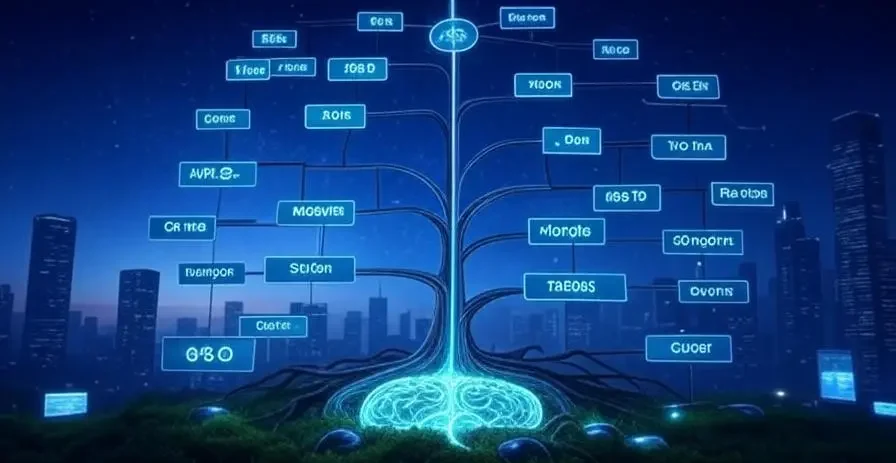How They Power Machine Learning in 2025
In the ever-evolving world of artificial intelligence and data science, decision trees stand out as a powerful and intuitive tool. As of July 2025, these machine learning models are widely used across industries to solve complex problems, from predicting customer behavior to optimizing business strategies. But what exactly are decision trees, and how do they function? This comprehensive guide explores the essence of decision trees, their mechanics, real-world applications, benefits, limitations, and future trends, making it an essential read for anyone interested in machine learning and data analysis.
What Are Decision Trees?
Decision trees are a type of supervised learning algorithm used in machine learning to model decisions and their possible consequences. Imagine them as a flowchart-like structure where each node represents a decision point, and branches represent the outcomes of those decisions, leading to a final result. This tree-like model is particularly effective for both classification and regression tasks, making it versatile for various data-driven scenarios.
The concept originated in the 1960s with the development of early statistical methods, but it gained prominence in 1984 with the publication of Classification and Regression Trees (CART) by Leo Breiman and his colleagues. Since then, decision trees have become a cornerstone of predictive analytics, offering a visual and logical approach to decision-making processes. They are especially popular because they mimic human reasoning, breaking down complex decisions into simpler, manageable steps.
How Do Decision Trees Work?
Understanding how decision trees work requires a look at their structure and the algorithms that build them. A decision tree consists of three main components: the root node, internal nodes, and leaf nodes. The root node is the starting point where the data is first split based on a feature. Internal nodes represent subsequent decisions or conditions, while leaf nodes, or terminal nodes, provide the final output, such as a class label or a numerical value.
The Building Process
The construction of a decision tree follows a recursive partitioning process. Here’s how it unfolds:
- Selecting the Best Split: The algorithm evaluates all possible splits of the dataset based on features and chooses the one that maximizes information gain or minimizes impurity. Common metrics include Gini impurity, entropy, and mean squared error (MSE), depending on whether the task is classification or regression.
- Splitting the Data: The dataset is divided into subsets based on the selected feature value. This process repeats for each subset, creating branches.
- Stopping Criteria: The tree stops growing when it reaches a predefined condition, such as a maximum depth, a minimum number of samples per node, or no further improvement in purity.
- Pruning (Optional): To avoid overfitting, pruning removes branches that add little predictive power, ensuring the model generalizes well to new data.
Key Algorithms
Several algorithms drive decision tree construction, with CART being the most widely used. Other notable methods include ID3 (Iterative Dichotomiser 3) and C4.5, which focus on optimizing splits using information gain and gain ratio, respectively. These algorithms adjust the tree’s structure to balance accuracy and simplicity.
Applications of Decision Trees
Decision trees are incredibly versatile, finding applications across multiple domains:
- Healthcare: Doctors use decision trees to diagnose diseases based on symptoms, patient history, and test results, improving treatment accuracy.
- Finance: Banks employ them to assess credit risk by analyzing income, credit score, and spending patterns.
- Marketing: Businesses predict customer churn or segment audiences for targeted campaigns using decision tree models.
- Environmental Science: Researchers predict deforestation rates by evaluating factors like rainfall and human activity.
In 2025, the integration of decision trees with big data platforms has expanded their use in real-time decision-making, such as fraud detection in e-commerce.
Advantages of Decision Trees
Decision trees offer several benefits that contribute to their popularity:
- Ease of Interpretation: Their visual nature makes them accessible to non-experts, allowing stakeholders to understand the decision-making process.
- No Data Preprocessing Required: Unlike some algorithms, decision trees handle categorical and numerical data without extensive scaling or normalization.
- Flexibility: They support both classification and regression tasks, adapting to various problem types.
- Feature Importance: Decision trees highlight which features most influence outcomes, aiding in feature selection.
Limitations of Decision Trees
Despite their strengths, decision trees have drawbacks that users must address:
- Overfitting: Trees can become overly complex, fitting noise in the training data rather than the underlying pattern, leading to poor performance on unseen data.
- Instability: Small changes in data can result in entirely different tree structures, reducing reliability.
- Limited Complexity: They struggle with capturing interactions between features in highly nonlinear datasets, often requiring ensemble methods like Random Forests for better results.
Enhancing Decision Trees with Ensemble Methods
To overcome limitations, decision trees are often combined into ensemble models. Random Forests, for instance, use multiple trees to average predictions, reducing overfitting and improving accuracy. Gradient Boosting Machines (GBM) and XGBoost further enhance performance by iteratively correcting errors, making them top choices in machine learning competitions as of 2025.
Future Trends in Decision Trees
The future of decision trees is bright, with several trends shaping their evolution:
- Integration with AI: Combining decision trees with artificial intelligence, especially neural networks, is improving their ability to handle unstructured data like images and text.
- Real-Time Applications: Advances in hardware and cloud computing enable decision trees to process streaming data, supporting applications like autonomous vehicles.
- Explainable AI: As demand for transparent AI grows, decision trees are being refined to provide clearer explanations, aligning with regulatory requirements.
- Scalability: New algorithms are enhancing decision trees’ ability to scale with massive datasets, a critical need in the era of big data.
Best Practices for Using Decision Trees
To maximize the effectiveness of decision trees, consider these best practices:
- Prune Aggressively: Use pre-pruning or post-pruning to control tree depth and prevent overfitting.
- Balance the Dataset: Address imbalanced data with techniques like oversampling or weighting to ensure fair splits.
- Tune Hyperparameters: Adjust parameters like max depth and minimum samples per split using cross-validation.
- Visualize Results: Leverage tools like Graphviz or Python’s Scikit-learn to interpret and refine the tree structure.
Decision Trees in Action: A 2025 Perspective
In 2025, decision trees are at the forefront of predictive analytics. For example, a retail company might use a decision tree to predict stock demand based on historical sales, weather data, and holidays. The root node could split on holiday seasons, with branches analyzing weather impact and sales trends, ultimately predicting inventory needs with 85% accuracy. Such real-world applications underscore their practical value.
Conclusion: Mastering Decision Trees
Decision trees are a foundational element of machine learning, offering a blend of simplicity and power. From their origins in statistical modeling to their current role in AI-driven solutions, they continue to evolve, addressing modern challenges with innovative techniques. By understanding what decision trees are and how they work, businesses and individuals can harness their potential to make informed decisions, predict outcomes, and stay ahead in a data-driven world.
As technology advances, the adaptability of decision trees ensures they remain relevant. Whether you’re a data scientist, a business leader, or a curious learner, exploring decision trees opens new avenues for growth. Are you ready to unlock their potential in your projects?
Frequently Asked Questions
What is the main purpose of a decision tree?
The main purpose of a decision tree is to provide a clear, step-by-step method for making decisions or predictions based on input data, used in both classification and regression tasks.
Can decision trees handle missing data?
Yes, decision trees can handle missing data by using surrogate splits or assigning the instance to the most common branch, though advanced preprocessing can improve results.
How do I prevent overfitting in decision trees?
To prevent overfitting, use pruning techniques, limit tree depth, set a minimum number of samples per node, or employ ensemble methods like Random Forests.
Are decision trees suitable for all types of data?
Decision trees work well with structured data but may struggle with highly nonlinear or unstructured data, where ensemble methods or other algorithms might be more effective.
What tools can I use to create decision trees?
Popular tools include Python’s Scikit-learn, R’s rpart package, and visualization tools like Graphviz, which help build and interpret decision trees efficiently.



